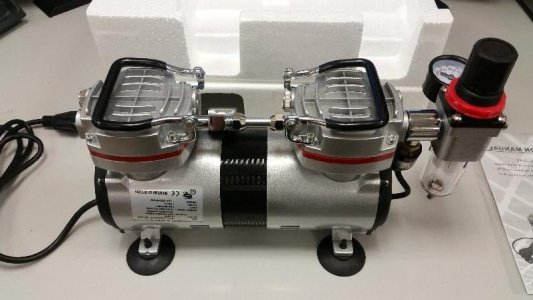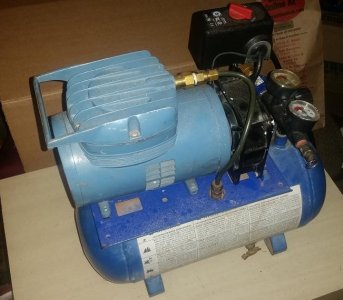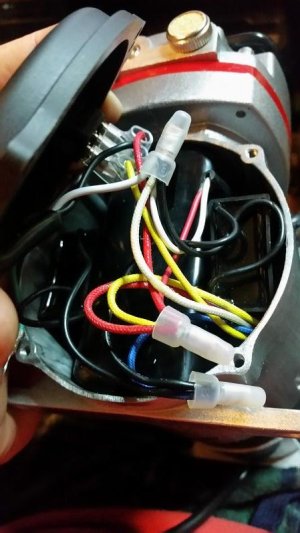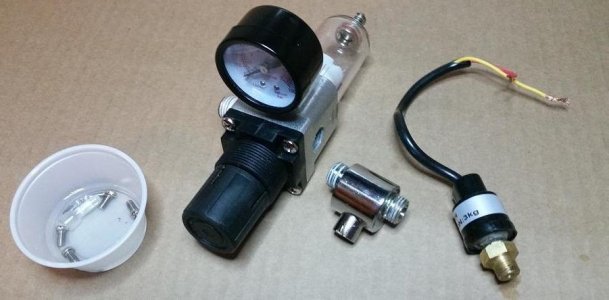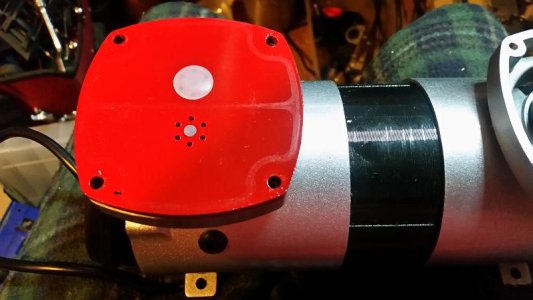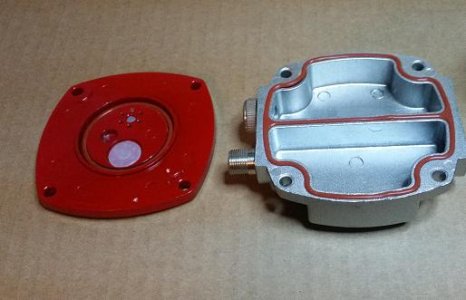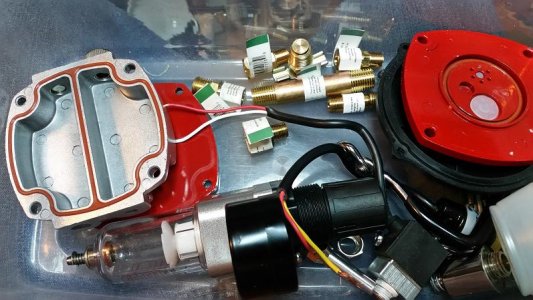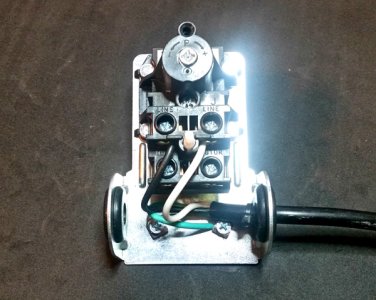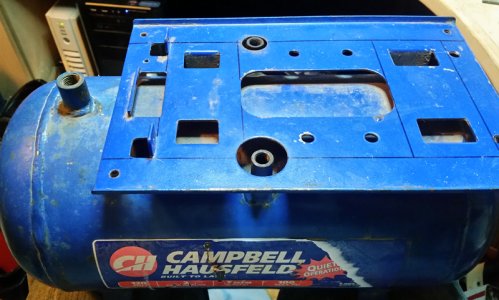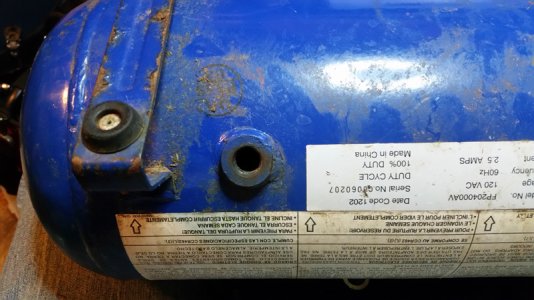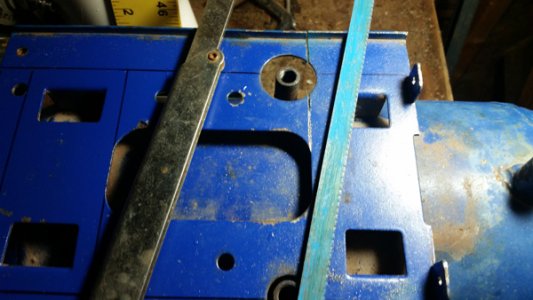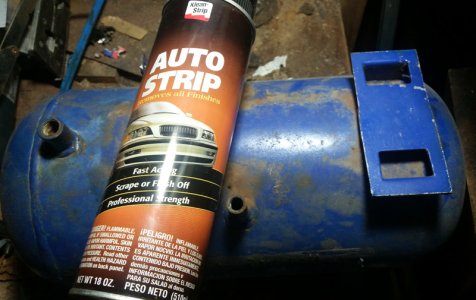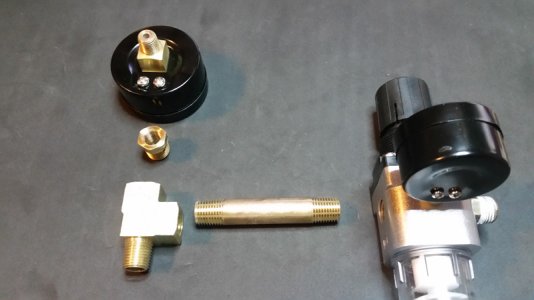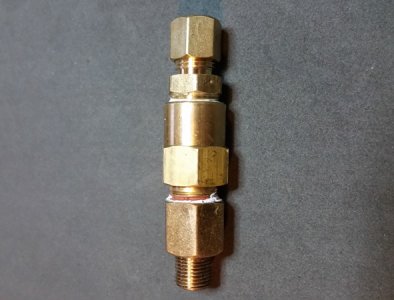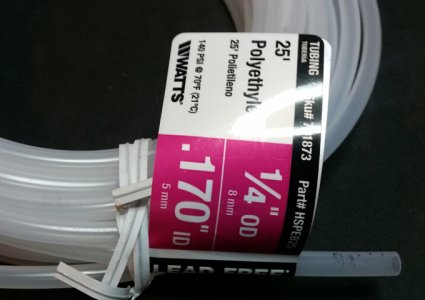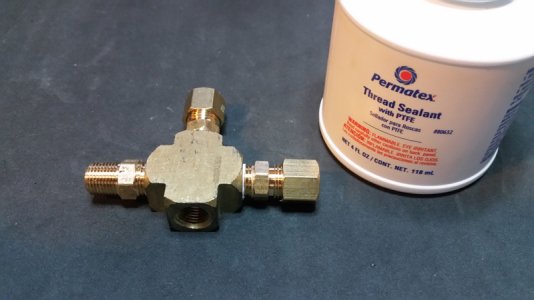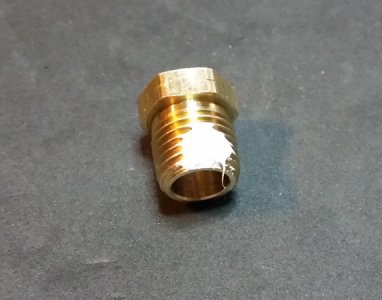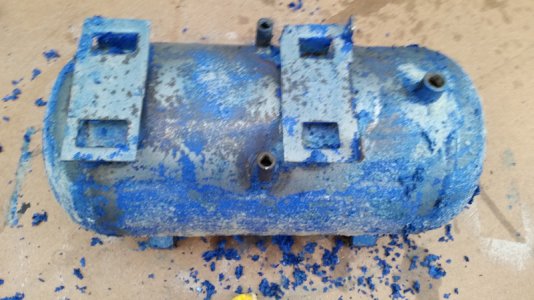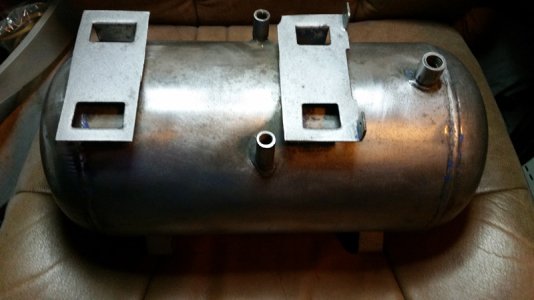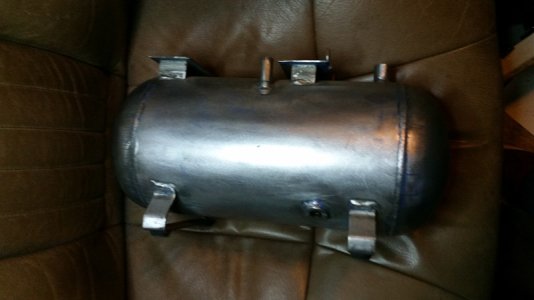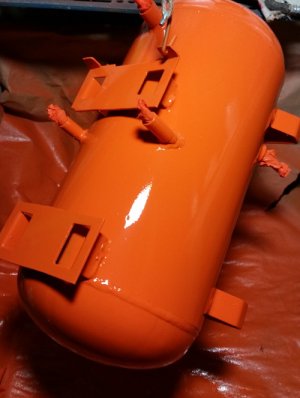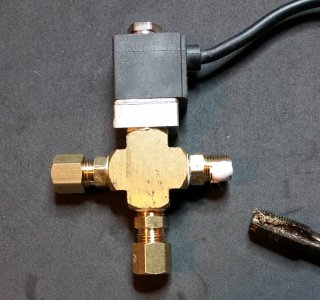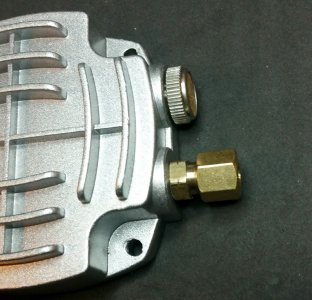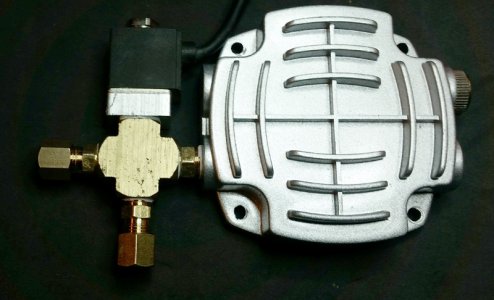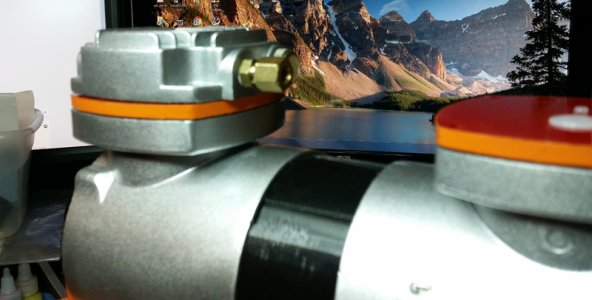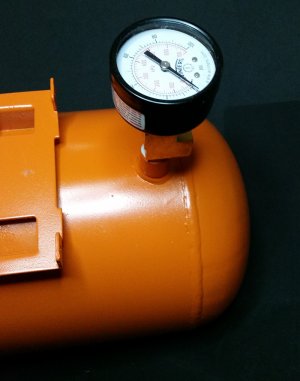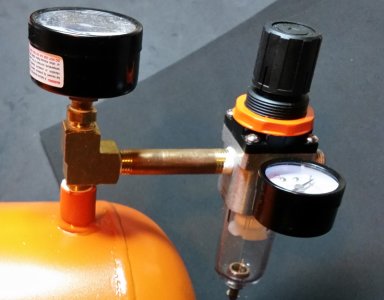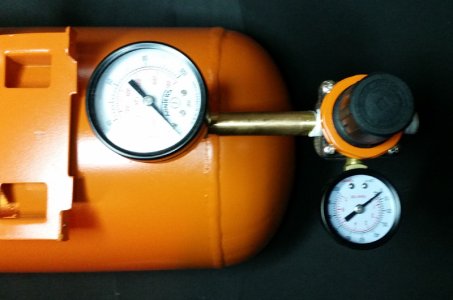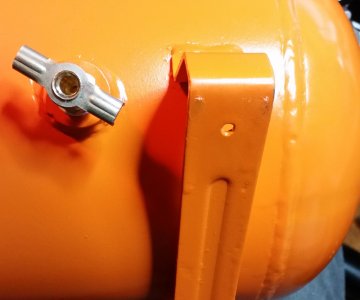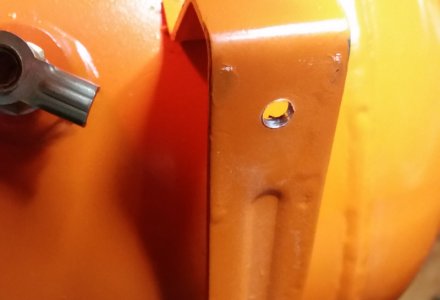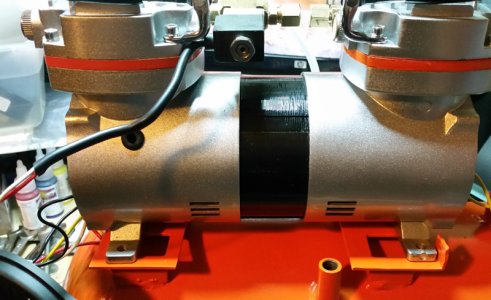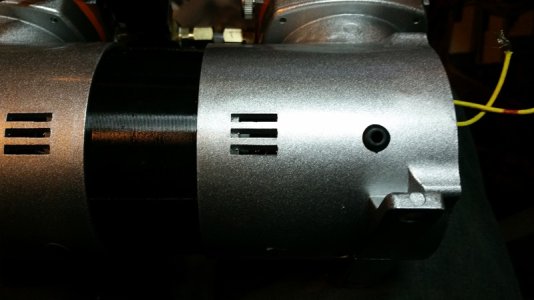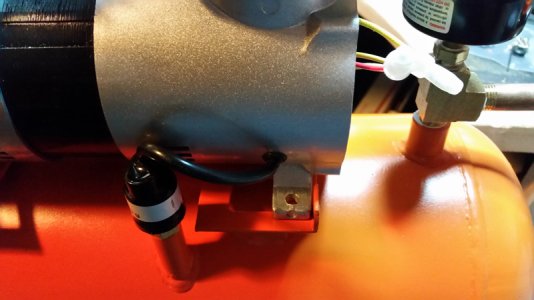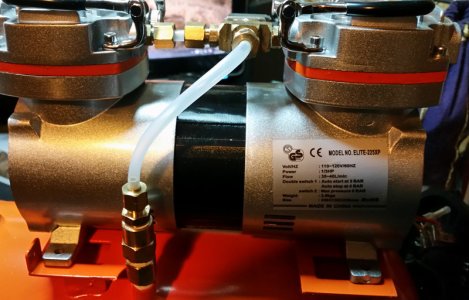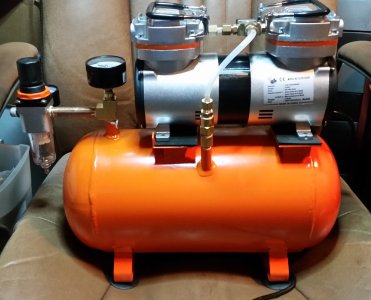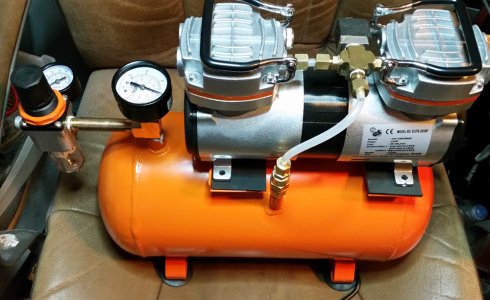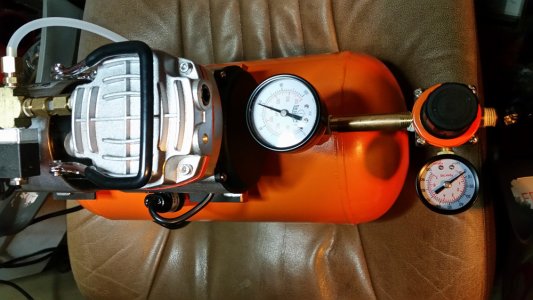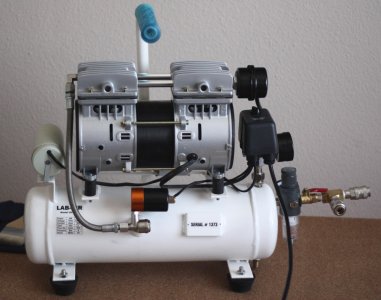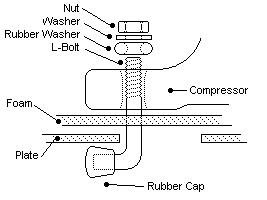Amra
Needle-chuck Ninja
So, where to begin. For Christmas my sister got me a new compressor (This one). She knew my old one was pretty well knackered. 
Of course the easier and less expensive option would have been to ask my sister to return the gift, and exchange it for same compressor already mounted on a tank (This compressor) Heck, the brass fittings alone will cost more than the 30 dollars difference between those two compressors!
Undeterred, I decide I might as well do it myself. As I said, I already had a fairly knackered airbrush compressor that I cobbled together a while back, so I might as well recycle it!
The first step was disassembling my new compressor! In order to remove the regulator assembly, check valve, and pressure sensor/switch off the new compressor, I needed to disconnect the pressure switch from the wiring, so first order of business was to open the face, and draw up a wiring diagram, then open the wiring clips to remove the wires connected to the pressure swich.

Lastly, I went out and purchased some of the parts I would need for the reassembly.
Also, sorry for the rather brisk descriptions for this first post, I didn't think I was going to do a worklog. That said, I will happily go into more detail on any specific thing, just ask if you need/want more!
I went ahead and tried using this compressor, and it did work pretty good, however there were a couple issues that I ran into (I referenced those issues in this thread, and I felt they would be eliminated by adding a tank.
Of course the easier and less expensive option would have been to ask my sister to return the gift, and exchange it for same compressor already mounted on a tank (This compressor) Heck, the brass fittings alone will cost more than the 30 dollars difference between those two compressors!
Undeterred, I decide I might as well do it myself. As I said, I already had a fairly knackered airbrush compressor that I cobbled together a while back, so I might as well recycle it!
That is my old compressor, but that is a photo for the next post.
The first step was disassembling my new compressor! In order to remove the regulator assembly, check valve, and pressure sensor/switch off the new compressor, I needed to disconnect the pressure switch from the wiring, so first order of business was to open the face, and draw up a wiring diagram, then open the wiring clips to remove the wires connected to the pressure swich.
After that, I could unscrew the pressure switch, then unscrew the regulator assembly and the finally unscrew the checkvalve from the regulator.
It seems they use some kind of loctite/hardening pipedope on the threads, but they came off with some "gentle" pursuasion.
Now we were able to remove the heads, leaving the piston valves exposed, and then removing the valves you can see the piston walls/piston. Basically, these units have a two chambered head, one where the air comes in, and another where the air goes out, those are sealed against the valve, which is basically two check valves, one for allowing air to enter the piston chamber and one for allowing the air to exit the piston chamber. So the air inters the upper chamber, the downward motion of the piston creates a vacuum which sucks air through one of the check valves, then the piston moves upwards, creating pressure which forces the air through the second check valve, pressurizing the second chamber in the head. One could effectively turn this compressor into a cheap vacuum pump by simply installing the red valve plate backwards and not installing a check valve between the tank and compressor, so we need to be careful on re-assembly to ensure we do not install anything upside down or backwards. I put a black sharpie mark on the side of the head/valve/compressor assembly to ensure proper reassembly.
This is what the underside of the head and check valve plate look like.
Lastly, I went out and purchased some of the parts I would need for the reassembly.
The next post will show the upcoming design, how we disassembled the old compressor, how we are cleaning/modifying the old tank, and maybe we can work on repainting it!
Also, sorry for the rather brisk descriptions for this first post, I didn't think I was going to do a worklog. That said, I will happily go into more detail on any specific thing, just ask if you need/want more!
Last edited:

